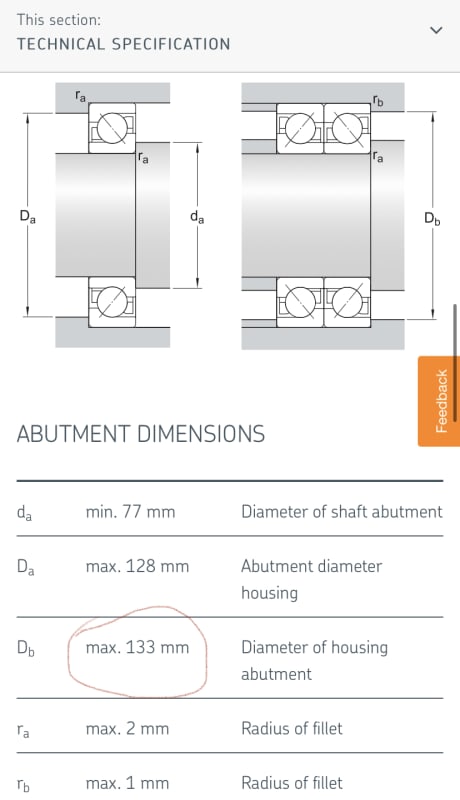Mech5656
Mechanical
- Aug 2, 2014
- 127
Hello All,
We are repairing a pump and bearing housing bore against which two thrust bearings sit (7313 BECBM bearings) was machined oversized by 0.030 diametrical. SKF recommends that bore to be max 133 mm (5.236 inches) , as shown in attached picture. That bore is machined to 5.266”. My question is: is it still acceptable? Can it still be used?


We are repairing a pump and bearing housing bore against which two thrust bearings sit (7313 BECBM bearings) was machined oversized by 0.030 diametrical. SKF recommends that bore to be max 133 mm (5.236 inches) , as shown in attached picture. That bore is machined to 5.266”. My question is: is it still acceptable? Can it still be used?


